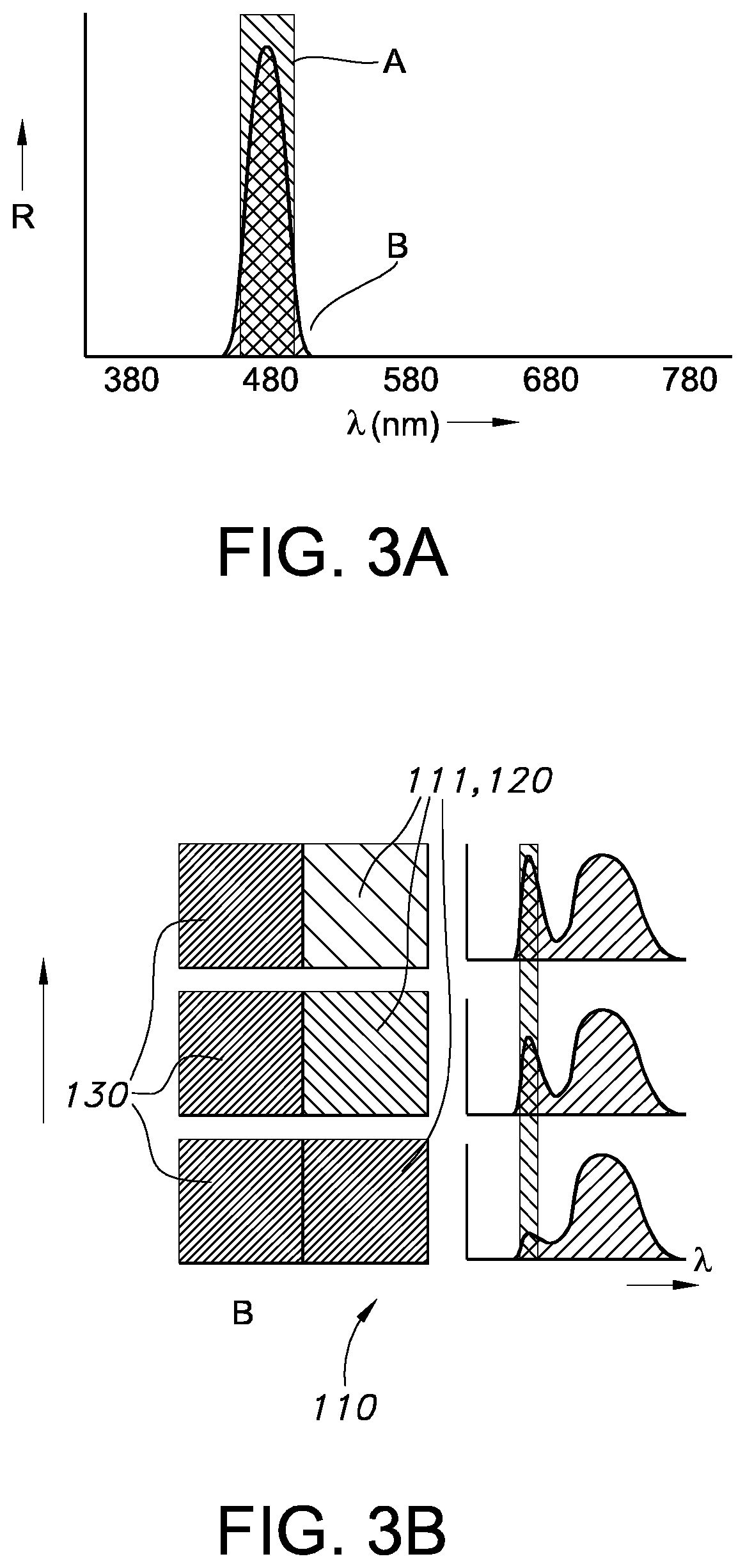Light melanopic activity indicator
a technology of melanopic activity and indicator, applied in the field of light indicators, can solve the problems of increasing alertness, enhancing non-visual responses is not always desirable, and the negative impact of light at night on sleep quality
- Summary
- Abstract
- Description
- Claims
- Application Information
AI Technical Summary
Benefits of technology
Problems solved by technology
Method used
Image
Examples
Embodiment Construction
[0055]Amongst others, the invention provides e.g. a visual indicator, consisting of multiple patches (herein also indicated as light indicator elements) of a pigment on a black background, where the reflectance curve of the pigment closely resembles the absorbance of the melanopsin pigment, and the patches each are set to varying reflectance levels (e.g. 20%, 40%, 60%, 80% and 100%). An accompanying table, may be provided, where the user (after visual inspection of the patches) can get an indication of the overall amount of melanopic activity of the current illuminant, based on the last patch that is still discernible from the background.
[0056]FIG. 1a schematically depicts an embodiment of a light indicator 100 for use in evaluating the melanopic flux. The light indicator 100 comprises a light indicator element 110 and a non-sensing area 130. The light indicator element 110 comprises the sensing area 111. The light indicator element 110 comprises a light reflecting element 120 confi...
PUM
| Property | Measurement | Unit |
|---|---|---|
| wavelength range | aaaaa | aaaaa |
| visible wavelength range | aaaaa | aaaaa |
| wavelength range | aaaaa | aaaaa |
Abstract
Description
Claims
Application Information
 Login to View More
Login to View More - R&D
- Intellectual Property
- Life Sciences
- Materials
- Tech Scout
- Unparalleled Data Quality
- Higher Quality Content
- 60% Fewer Hallucinations
Browse by: Latest US Patents, China's latest patents, Technical Efficacy Thesaurus, Application Domain, Technology Topic, Popular Technical Reports.
© 2025 PatSnap. All rights reserved.Legal|Privacy policy|Modern Slavery Act Transparency Statement|Sitemap|About US| Contact US: help@patsnap.com



